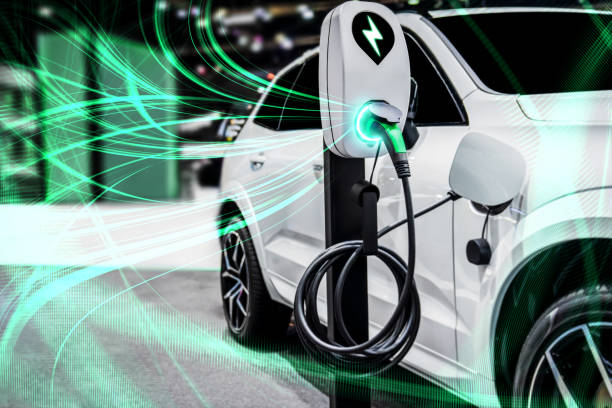Decoding EV Battery Costs and Chemistries: How Technology, Suppliers, and Design Choices Shape the Future of Electric Vehicles
The electric vehicle (EV) revolution continues to accelerate, with battery technology serving as the cornerstone of this transformation. As automakers strive to balance performance, affordability, and sustainability, understanding the cost dynamics and composition of EV batteries becomes critical. This detailed examination explores the battery specifications, cost structures, and technological choices across six prominent electric vehicles slated for production between 2022 and 2025.

The Role of Battery Chemistry in Cost and Performance
Modern EV batteries are defined by their chemical compositions, which directly influence energy density, longevity, and cost. The vehicles analyzed here employ four distinct battery types: Nickel Cobalt Manganese Aluminum (NCMA), Nickel Cobalt Aluminum (NCA), Nickel Cobalt Manganese (NCM622), and Lithium Iron Phosphate (LFP). Each chemistry presents unique trade-offs.
For instance, the 2025 Cadillac Escalade IQ utilizes an NCMA battery supplied by LG Energy Solution, priced at $22,540 for a 200 kWh capacity. This chemistry blends nickel for energy density, cobalt for stability, and aluminum to reduce cobalt dependency—a strategic choice to mitigate supply chain risks while maintaining high performance. By contrast, the 2023 Mustang Mach-E Standard adopts an LFP battery from CATL, costing just $6,895 for a 70 kWh capacity. LFP batteries forego nickel and cobalt entirely, relying on iron and phosphate for a safer, more affordable solution, albeit with lower energy density. These decisions reflect automakers’ priorities: luxury models like the Escalade IQ prioritize range and power, while mass-market vehicles like the Mach-E focus on cost efficiency.
Supplier Ecosystem and Cost Implications
The battery supply chain plays a pivotal role in determining final costs. Leading cell manufacturers such as LG Energy Solution, Panasonic, CATL, and Gotion dominate the market, each bringing specialized expertise.
For example, the 2025 RAM 1500 REV Limited sources its 229 kWh NCMA battery from LG Energy Solution at $25,853, contributing nearly 32% of the estimated $81,000 price. LG’s dominance in high-nickel chemistries supports RAM’s goal of delivering a robust electric pickup with extended range. Meanwhile, the 2025 Tesla Model S employs Panasonic’s NCA cells—a long-standing partnership that yields a $12,030 battery cost for a 100 kWh pack. Tesla’s reliance on NCA technology underscores its focus on maximizing energy density and fast-charging capabilities, even as competitors explore cobalt-free alternatives.
On the lower end, the 2023 Volkswagen ID.4 Standard uses CATL’s NCM622 cells, priced at $8,730 for a 62 kWh battery. CATL’s economies of scale and vertical integration in lithium extraction enable competitive pricing, making the ID.4 one of the most affordable EVs in its class.
Battery Capacity and Its Impact on Vehicle Pricing
Battery capacity remains a primary driver of both performance and cost. The 2025 RAM 1500 REV Limited’s massive 229 kWh battery—the largest in this analysis—enables an estimated range exceeding 400 miles, catering to commercial and recreational users. However, this capacity elevates the battery cost to $25,853, representing nearly a third of the vehicle’s total cost.
Despite its commercial focus, Rivian’s choice of LFP chemistry for its Amazon Delivery Van keeps costs manageable while ensuring durability for high-utilization scenarios. Similarly, the Mustang Mach-E’s 70 kWh LFP battery aligns with its urban commuter positioning, offering sufficient range (230–250 miles) at a fraction of the cost. These examples highlight how automakers tailor battery size to market segments: larger capacities for premium/long-range models and optimized capacities for budget-friendly options.
Cost Breakdown: Battery vs. Total Vehicle Price
The proportion of battery cost relative to the total vehicle price reveals strategic pricing philosophies. The Cadillac Escalade IQ’s $22,540 battery accounts for roughly 17% of its $130,000 price tag, reflecting Cadillac’s emphasis on luxury features and advanced technologies beyond the powertrain. Conversely, the Rivian Amazon Delivery Van’s $13,298 battery represents approximately 25% of its $52,690 total cost, illustrating the van’s utilitarian design where the battery is a central investment.
Notably, the Tesla Model S showcases a middle ground: its $12,030 battery constitutes about 14% of its $88,490 price, a testament to Tesla’s streamlined manufacturing and software-centric value proposition. These disparities underscore how branding, target demographics, and production scale influence cost allocation.
Future Trends: Sustainability and Material Innovation
The shift toward cobalt-free and nickel-reduced batteries is reshaping the industry. LFP batteries, used in the Mustang Mach-E and Rivian van, are gaining traction due to their lower environmental impact and avoidance of conflict minerals. CATL and Gotion are pioneering LFP innovations, such as cell-to-pack (CTP) designs that improve energy density without altering chemistry.
Meanwhile, automakers like General Motors (Cadillac) and Stellantis (RAM) are hedging their bets with NCMA and NCM622 batteries, which reduce—but do not eliminate—cobalt reliance. Looking ahead, solid-state batteries and silicon anode technologies promise further cost reductions and performance leaps. However, scaling these innovations will require overcoming manufacturing hurdles and securing raw materials like lithium and silicon.
Conclusion: Balancing Affordability and Innovation
The EV battery landscape is a complex interplay of chemistry, capacity, and cost. As the data illustrates, automakers must navigate trade-offs between energy density, ethical sourcing, and consumer affordability. Luxury models leverage high-nickel chemistries to deliver premium performance, while mass-market vehicles adopt LFP to democratize EV access.
Suppliers like CATL and LG Energy Solution will continue to drive advancements, but challenges such as material scarcity and geopolitical supply chain risks loom large. Ultimately, the industry’s success hinges on its ability to innovate without compromising sustainability—a goal that demands collaboration across automakers, suppliers, and policymakers. The next decade will likely witness a seismic shift as solid-state batteries and recycling technologies mature, potentially rendering today’s cost structures obsolete and ushering in a new era of electric mobility.
Sources: Benchmark Mineral Intelligence, Business Insider, Counterpoint, Car and Driver, ClearTechnica, InsideEVs ; On X : Elements; Photo from: iStock
0 Comment to "Electric Vehicle Battery Costs and Technology Trends (2022–2025): A Comprehensive Analysis of Chemistry, Capacity, and Future Innovations"
Post a Comment